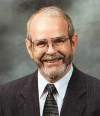What's happening in drilling
Another consolidation, interesting new instrumentsPride International, Inc., and Marine Drilling Companies, Inc., announced that they have entered into a definitive agreement to merge in a stock-for-stock transaction that will produce the industry’s third largest offshore drilling contractor, based on enterprise value. At stock prices on May 23, the total value of the combined company would be about $6.2 billion. The new company will retain the Pride International, Inc. name. Robert L. Barbanell, current chairman of Marine Drilling, will serve as chairman, and Paul A. Bragg, current president and CEO of Pride, will be president and CEO. Marine Drilling’s CEO Jan Rask says, "This merger combines two strong companies with complementary assets. Pride is the right partner at the right time. We are gradually approaching replacement cost pricing for jackups, and I can think of no other combination which would result in the upside that Pride and Marine Drilling represents." The company will be one of the largest offshore drilling contractors in the world, with an offshore fleet of 77 rigs, including two drillships, 11 semis, 35 jackups and 29 tender-assist, barge and platform rigs. Six of these rigs are newly constructed and capable of operating in waters of 5,000 ft or more. It will also operate a fleet of 246 land rigs in international markets. The company will have its principal offices in Houston, and employ more than 10,000 people worldwide. The transaction requires approval of each company’s shareholders and completion of the antitrust review. The companies expect the deal to be completed late in 2001. Wellsite sample analysis. Halliburton Co.’s Sperry-Sun Drilling Services and Westport Technology Center International, in alliance with Chemostrat Ltd., announced the launch of their LaserStrat service, the industry’s first wellsite chemostratigraphy service. Successful completion of the first deployment for North Sea operator Veba Oil & Gas Netherlands has demonstrated how this service can bring the correlation technique of chemostratigraphy out of the lab and to the wellsite, where it can be used to assist with critical drilling decision-making in near real time. The new service has the ability to provide, for the first time, rapid-turnaround elemental analysis of cutting samples for chemostratigraphic correlation at the wellsite. The tool can also aid in geosteering, save time / money and minimize risk during drilling. The rapid-turnaround correlations, typically produced within 30 min. of sample collection from the shale shakers, are made possible by combining: Sperry-Sun’s wellsite expertise; Chemostrat’s know-how in interpreting whole-rock elemental data; and the LaserStrat spectrometer’s compact size and advanced laser-based technology. Westport supports the service, providing a full range of lab-based petrology and sedimentology services to enhance chemostratigraphic interpretation. The service can be used to confidently identify horizons, and as a look-ahead tool for drilling operations, by providing correlations to offset wells in near real time. It also allows more confidence when choosing coring / casing points and TD, and it can be useful in recognizing expanded sedimentary sections, unconformities and faults by identifying the fingerprint of specific zones or horizons. Veba recently tested the tool successfully during development drilling in an offshore field in the Dutch North Sea. The objective was to detect a critical casing point in Tertiary shales just above the Chalk field reservoir section. This was achieved, and further application in assisting geosteering in horizontal wells is being tested during continued drilling in the same field. Disposable fiber-optic system. Sandia National Laboratories, with Gas Technology Institute (GTI) funding, has developed and tested an interesting system that uses an un-armored fiber-optic cable inside the drill pipe, protected only by a thin clear plastic coating, to relay information from the bottomhole assembly sensing device to surface. The inexpensive fiber-optic string would last about 24 hours before failing, then disintegrate from mud flow and wear, and be ground up as it is washed through the bit. The Sandia researcher, David Holcomb, who devised the technique says, "Information is instantaneously sent to surface about temperature, pressure, chemistry and the rock formation, all without stopping the drilling operation. Traditionally, this involves stopping drilling and running wireline tools. Or limited information is offered via mud pulse telemetry." While the details are not completely clear from a brief communication with Holcomb, it is understood that the system is run using a tool inserted in the drillstring during a connection. The lower part of the tool separates, pulling the fiber downhole from a coiled main supply. The bottom part comprises a non-contacting coil which receives data from a second coil in the BHA and transmits the information up the fiber. At the surface, in tests so far with "singles," the top of the system comprises another pair of coils which transmit the signal to a side-entry sub under the top drive unit, which relays information to the surface processing system. The actual fiber-optic cable placed into the drillstring weighs only about one pound. To add stands, an electrical connection, joined by a length of cable to the top of the deployment tool located below the first drill pipe connection, is broken and remade when the stand is added. The system was tested last September at the GRI /
CatoosaSM Test Facility, Inc., a GTI subsidiary, located in Catoosa, Oklahoma. The fiber was only run to 3,000
ft, but developers say it could be easily run to 10,000 ft or deeper. Reportedly, the system can transmit data
at about one megabit per second, 100,000 times faster than available MWD transmission systems. David Holcomb
can fill in the details and update project status. He can be contacted at tel.: 505 844 2157; email:
djholco@sandia.gov.
|



